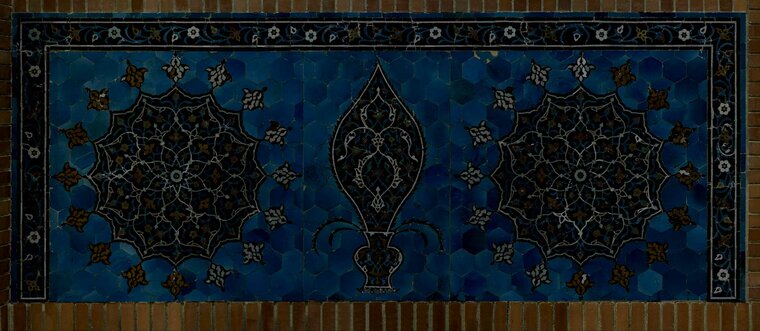
Isfahan Tile Mosaic Panel
, 16th Century
200 x 459.2 x 2 cm (h x w x d)
Isfahan, in today's Iran is famous for its incredible tile work. Mosaics and intricate patters span whole buildings. The ancient Persian kingdom had a far reaching reputation for such ornamentic art. The most prominent temples also belong to UNESCOs world heritage today.




